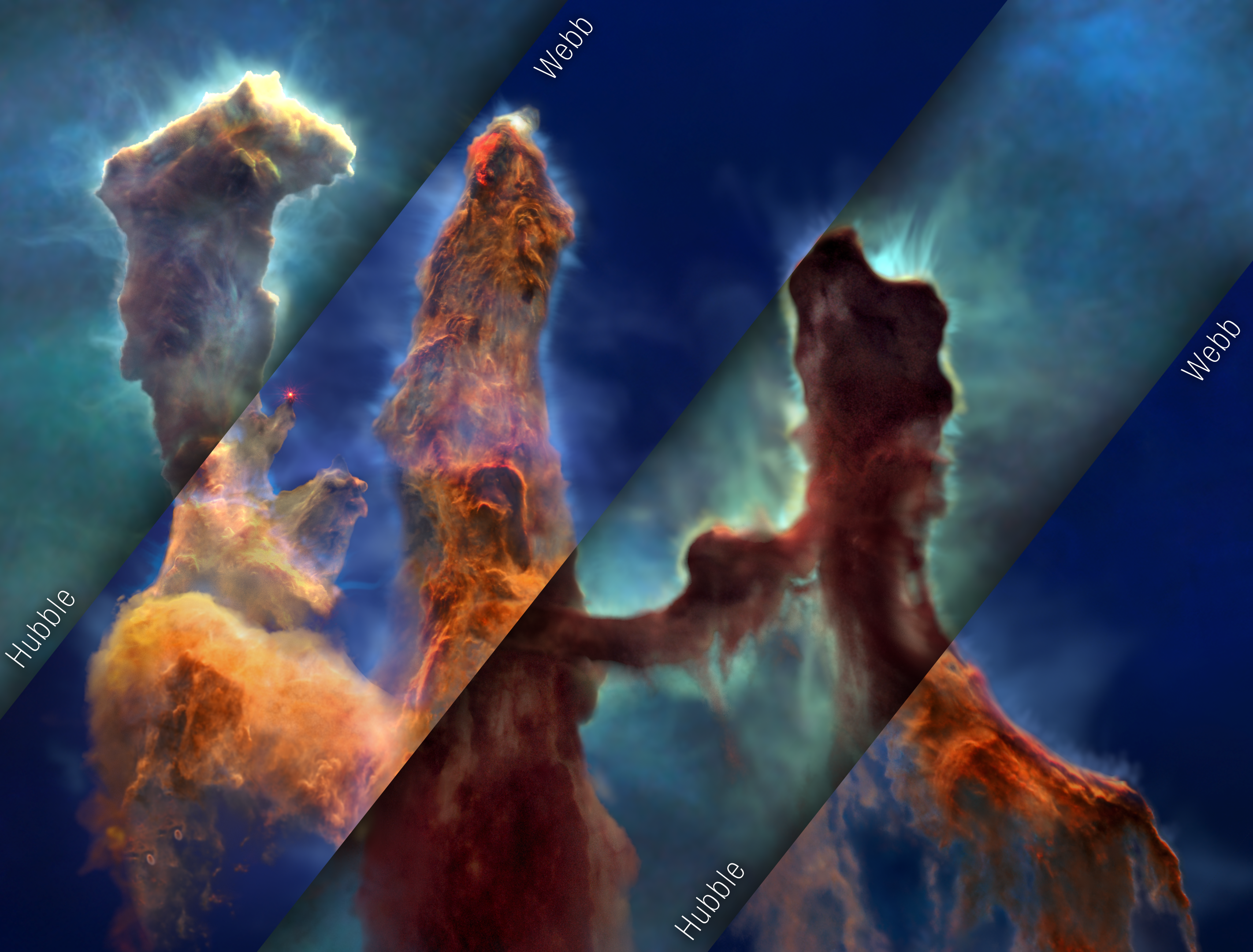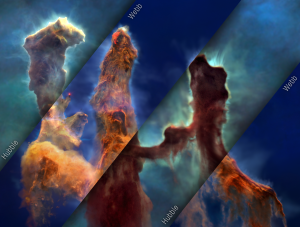
Hubble and Webb Pillars of Creation Visualization Frame
This image is a mosaic of visible-light and infrared-light views of the same frame from the Pillars of Creation visualization. The three-dimensional model of the pillars created for the visualization sequence is alternately shown in the Hubble Space Telescope version (visible light) and the Webb Space Telescope version (infrared light). In the Hubble version of the model, the pillars feature dark brown opaque dust and bright yellow ionized gas set against a greenish-blue background. The Webb version of the model showcases orange and orange-brown dust that is semi-transparent, with light blue ionized gas against a dark blue background. The visualization sequence fades back and forth between these two models as the camera flies past and amongst the pillars. These contrasting views illustrate how observations from the two telescopes complement each other and probe different science aspects of the pillars.
- X





























